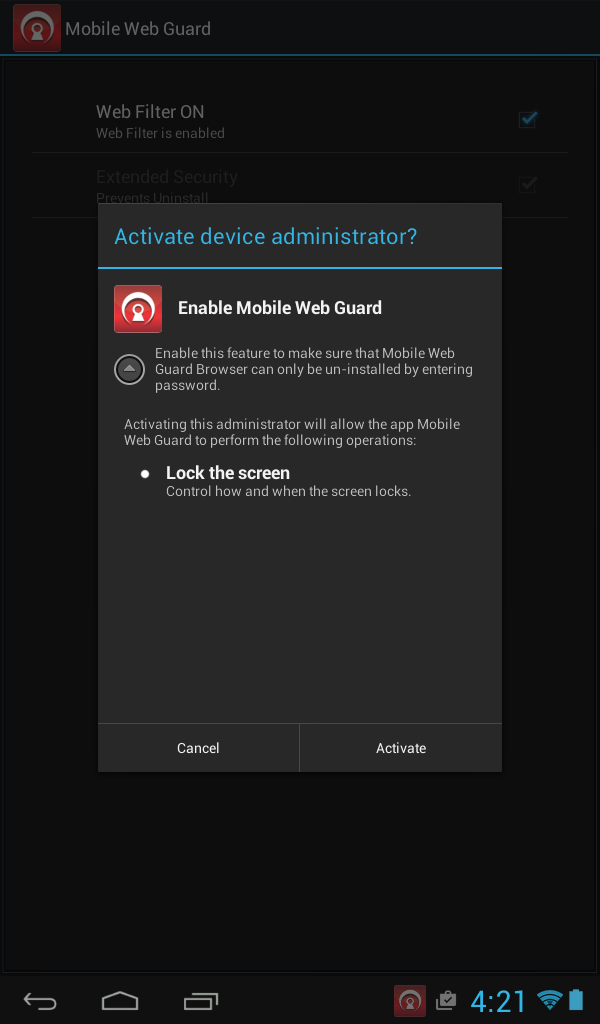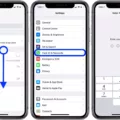If you’re looking for a way to keep your family safe online, then Web Guard is the perfect solution. Web Guard is a feature offered by T-Mobile that provides an extra layer of security and protection while browsing the internet. It blocks access to websites that contain inappropriate or unsafe content, such as adult material, malware, phishing sites, and more. With Web Guard enabled, you can rest assured that your family is browsing the web in a safe and secure environment.
Web Guard works by filtering out malicious content from your internet connection. It uses advanced algorithms to detect and block dangerous websites and content before it reaches your device. This means that any questionable websites or content will be blocked before it even enters your home network. Additionally, Web Guard also monitors online activity and sends alerts if there are potential threats detected on your device.
Another great benefit of Web Guard is its ease of use: it’s easy to enable or disable the feature with just a few clicks! To activate Web Guard on your T-Mobile account, simply log into the My T-Mobile portal and click “Your Profile” followed by “Edit” in the Phone Controls section. Once there, you can switch off or on the Web Guard feature with just one click!
Overall, T-Mobile’s Web Guard feature is an excellent way to ensure that your family stays safe while browsing the web. With its advanced filtering technology and easy activation process, you can rest assured knowing that any potentially dangerous material will be blocked before it ever reaches your home network!

Turning Off Webguard on a Phone
Webguard is a feature of Trend Micro Mobile Security that blocks malicious websites and dangerous downloads. To turn off Webguard on your phone, open the Trend Micro Mobile Security app. Go to Settings > Privacy & Protection > WebGuard. You will then see an option to toggle the switch to OFF, which will disable Webguard on your device.
Locating the Web Guard Feature on a Mobile Phone
The Web Guard feature is located in the Mobile Security app. To access it, open the app, then tap on the ‘Web Guard’ option. Once you are on the Web Guard page, you can turn it on by tapping on the check icon. You may be asked to enable the Accessibility option for Mobile Security in your phone settings before you can turn Web Guard on.
Removing Web Guard from an iPhone
To remove Web Guard from your iPhone, start by opening the Settings app. Tap on “Screen Time” and select “Content & Privacy Restrictions.” You’ll be asked to enter a four-digit passcode; if you haven’t set one up before, you’ll need to do so now. Once you’re in, tap on “Content Restrictions,” then “Web Content.” From there, tap on “Limit Adult Websites” to turn it off. Finally, tap on “Back” in the top left corner of the screen to save your changes. After that’s done, Web Guard will no longer be restricting your access to adult websites.
Bypassing T-Mobile Web Guard
Unfortunately, bypassing T-Mobile Web Guard is not possible. T-Mobile Web Guard is a security feature that helps protect your device from malicious content, phishing sites, and other questionable websites. It cannot be disabled or bypassed. The only way to access websites that are blocked by T-Mobile Web Guard is to log in to the primary My T-Mobile online account and change the Web Guard settings. To do this, click on “Your Profile” and then “Edit” in the Phone Controls section which lists the current Web Guard settings. Click the “Web Guard Off” circle, then click “Save Changes” and select “Yes” in the confirmation dialog. Please note that disabling Web Guard will leave your device vulnerable to malicious content and other potential threats online.
Disabling Web Guard on Android
To disable Web Guard on an Android device, open the T-Mobile app and select MORE > PROFILE SETTINGS > FAMILY CONTROLS. If you have multiple lines on your account, use the down arrow and select the line you want to make changes to. Select Web Guard, then select No Filtering (this means Web Guard is off). Once selected, Web Guard will be disabled and no content will be filtered on your Android device.
The Benefits of T-Mobile’s Web Guard
Web Guard from T-Mobile is a service that enables customers to filter the content they can access on their devices. It has three levels of filtering and blocks different types of content accordingly. The first level filters out adult websites, the second level blocks email access, and the third level filters out all non-family-friendly content. Web Guard is available on a per-line basis, meaning it can be set up for each device connected to a T-Mobile customer’s account. Recently there have been reports from customers of random web blocking, but this can be adjusted using the filtering levels provided by Web Guard.
Turning Off Web Restrictions
To turn off web restrictions, you will need to open your browser and select the ‘Tools’ menu option. Then, choose the ‘Internet Options’ option and click on the ‘Security’ tab. From there, select the ‘Restricted Sites’ icon and then click on the ‘Sites’ button. This will open a window with a list of all the websites that are blocked by your web restrictions. To disable these restrictions, simply uncheck each website from the list and click on OK to save your changes. That’s it! Your web restrictions should now be turned off, allowing you to access all websites without any restrictions.
Reasons Why Web Guard Keeps Turning Off
Web Guard is designed to help protect you from malicious websites and other online threats. As a security feature, it will automatically enable itself when your device is connected to the internet. However, if your device is using Power Saving Mode for power monitoring, it may stop apps running in the background, including Web Guard, in order to save battery power. If this is happening on your device, you can disable Power Saving Mode or manually turn Web Guard back on to ensure that you have the best protection available.
Understanding T-Mobile Device Block
T-Mobile device block is a service that prevents any type of chargeable message from being sent or received on your device. This includes emails, text messages, pictures, and instant messages. It is important to note that if you choose to subscribe to this service, you will not be able to send or receive any type of messages at all – even if you have a messaging bundle with T-Mobile. This service is beneficial for those who want to ensure that they are not charged for any unwanted messages.
Turning Off iPhone Content Filtering
To turn off content filtering on your iPhone, go to Settings > Screen Time. Once there, tap on Content & Privacy Restrictions and enter your Screen Time passcode. Then tap on Content Restrictions, followed by Web Content. From there, you can choose either Unrestricted Access to turn off all content filtering, Limit Adult Websites to block any mature or explicit websites, or Allowed Websites Only to create a list of approved websites that can be accessed.
Turning Off Content Filtering
To turn content filtering off, on your Android phone or tablet, go to SafeSearch settings. Then, turn off the Explicit results filter. This will disable all content filtering and allow unrestricted access to any search results that may cntain explicit content.
Can T-Mobile Track My Web Browsing History?
No, T-Mobile does not have access to the websites and URLs that you visit. The August 2020 version of their privacy policy specifies that they do not share smartphone customers’ web-browsing data with third parties. However, they may still collect this information in other ways, such as using cookies or other tracking technologies. As a result, it is possible that T-Mobile may be able to track your browsing activities even if they do not have access to the exact websites you visit.
Conclusion
The Web Guard feature is a useful tool to protect users from potential online threats by blocking access to malicious websites. It can be enabled or disabled depending on the user’s needs and preferences. When enabled, it provides an extra layer of protection against malicious content and helps keep children safe when they are using the internet. However, it is important to remember that this feature is not a substitute for proper security measures like antivirus software, firewalls, and other security tools.








